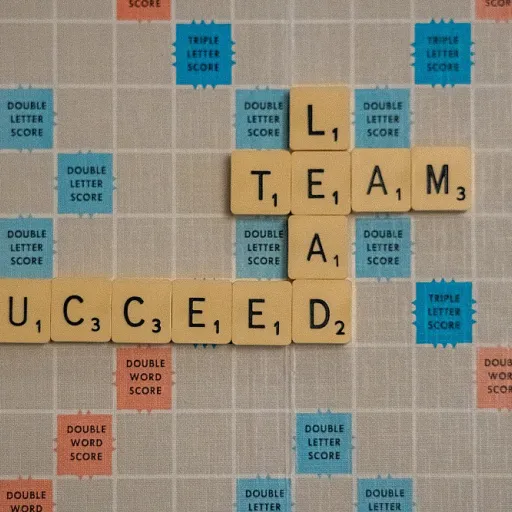
Understanding the importance of top screening
Why Top Screening Matters in Recruitment Process Outsourcing
In recruitment process outsourcing (RPO), top screening is the foundation for building a strong and reliable workforce. The screening stage is where organizations assess risk, evaluate candidate suitability, and ensure alignment with both job requirements and company culture. Much like preventive health screenings—such as blood pressure checks, cholesterol tests, and cancer screening—thorough candidate screening helps identify potential issues early, reducing the risk of costly hiring mistakes.
Screening is not just about filtering resumes. It’s a comprehensive process that considers multiple factors, including skills, experience, and even risk factors like gaps in employment or frequent job changes. Just as medical professionals use family history and risk factors to assess the likelihood of disease, recruiters analyze a candidate’s background to predict future performance and cultural fit. This approach is especially important for roles in health facilities, where the stakes are high and the impact of a poor hire can be significant.
For adults aged 40 and above, regular health screenings for conditions like diabetes, heart disease, and cancer are recommended to catch issues early. Similarly, in RPO, structured screening processes help organizations identify top talent before moving candidates forward. This not only improves quality of hire but also supports preventive care in workforce management, reducing turnover and enhancing long-term organizational health.
Screening effectiveness can be influenced by changes in the job market, evolving risk factors, and the specific needs of each facility or department. For example, certain industries may require more rigorous background checks or specialized tests, much like how cancer screening protocols differ based on age, family history, and other factors family members share. Understanding these nuances is key to achieving top screening outcomes.
For a deeper look at how pre-screening interviews can streamline the RPO process and improve screening outcomes, explore this resource on pre-screening interview benefits in recruitment process outsourcing.
Key challenges in candidate screening
Common Obstacles in Candidate Screening
Recruitment process outsourcing (RPO) teams often face a range of challenges when it comes to screening candidates. These obstacles can impact the quality of hires, the speed of the process, and ultimately, the health of an organization’s talent pipeline. Understanding these challenges is crucial for anyone looking to achieve top screening results.
- Volume of Applications: High application numbers can overwhelm even the most experienced teams. Sifting through hundreds or thousands of resumes makes it difficult to identify top candidates efficiently, especially for roles in high-demand sectors like healthcare or preventive care facilities.
- Quality vs. Speed: There is constant pressure to fill roles quickly, but rushing can lead to missing key risk factors in a candidate’s background, similar to skipping important health screenings like blood pressure or cholesterol tests. Balancing speed and quality is a persistent struggle.
- Unconscious Bias: Screening processes can be influenced by unconscious bias, which may affect the assessment of candidates from diverse backgrounds, including African American professionals or those with non-traditional career paths. This can limit access to top talent and reduce diversity in the workplace.
- Incomplete or Inaccurate Information: Candidates may provide incomplete details about their work history or skills, much like patients omitting family history of disease during medical assessments. This makes it harder to assess risk factors and suitability for the role.
- Changing Job Requirements: Just as medical guidelines for screenings like cancer or diabetes evolve over the years, job requirements can shift rapidly. RPO teams must stay updated on these changes to ensure their screening processes remain relevant and effective.
- Compliance and Data Security: Handling sensitive candidate data requires strict adherence to privacy laws and best practices, similar to managing medical records in a health facility. Any lapse can lead to significant risk for the organization.
Industry-Specific Screening Factors
Different industries require tailored screening approaches. For example, healthcare roles may demand verification of medical credentials, understanding of preventive care protocols, and assessment of experience with disease screenings such as cancer or heart disease. In other sectors, factors like years of experience, adaptability to change, and technical skills may be more critical.
Why Addressing These Challenges Matters
Overcoming these screening challenges is essential for building a strong workforce and reducing the risk of costly hiring mistakes. Just as regular health screenings like blood sugar or bone density tests help prevent disease, a robust screening process helps organizations avoid future issues by identifying the right candidates from the start. For more insights on improving efficiency in the recruitment process, explore this resource on enhancing efficiency with outsourced appointment setting.
Effective tools and technologies for screening
Leveraging Modern Screening Technologies
Recruitment process outsourcing (RPO) providers rely on a range of advanced tools and technologies to ensure top screening outcomes. These solutions help assess risk factors, streamline candidate evaluation, and support preventive care in talent acquisition. With the right technology stack, RPO teams can efficiently identify candidates who meet health and safety requirements, especially for roles in medical facilities or those involving high-risk environments.
- Automated Screening Platforms: These platforms use algorithms to analyze candidate data, such as years of experience, education, and relevant certifications. They can flag risk factors like gaps in employment or lack of preventive training, similar to how medical screenings detect early signs of disease.
- AI-Powered Assessments: Artificial intelligence can evaluate soft skills, cultural fit, and even predict potential for high performance. This is comparable to using blood tests or cholesterol checks to assess health risks in adults aged 40 and above.
- Background and Health Compliance Checks: For industries where health is critical, screening tools verify medical records, blood pressure history, or family history of disease. This is particularly important for roles in healthcare, where understanding factors like high blood pressure or diabetes risk is essential.
- Video Interviewing and Digital Assessments: These tools allow recruiters to observe non-verbal cues and assess communication skills, much like a preventive cancer screening can reveal early warning signs before they become critical.
Integrating these technologies not only improves the quality of screening but also supports a structured process that balances speed and thoroughness. For example, automated platforms can quickly identify candidates at risk for high blood pressure or cardiovascular disease, ensuring that only those who meet strict health criteria move forward. This is especially relevant for positions where blood flow, bone density, or cholesterol levels may impact job performance or safety.
Moreover, leveraging employer branding services in recruitment process outsourcing can enhance the effectiveness of these tools. A strong employer brand attracts candidates who are more likely to meet health and compliance standards, reducing the risk of costly hiring mistakes.
As the landscape of recruitment continues to evolve, staying updated on the latest screening technologies is essential. Regularly reviewing and updating your screening process, much like routine medical screenings for cancer or heart disease, ensures your organization remains compliant and competitive.
Best practices for structured screening processes
Building a Consistent and Fair Screening Framework
Establishing a structured screening process is essential for recruitment process outsourcing (RPO) providers aiming to deliver top results. A well-defined framework ensures every candidate is evaluated fairly, regardless of their background, age, or risk factors. This is especially important in sectors like healthcare, where the stakes are high and the need for preventive care, such as cancer screenings or blood pressure assessments, is well understood. Consistency in screening not only supports compliance but also helps identify the right talent for specialized roles in medical facilities.
Integrating Health and Risk Assessments in Screening
For roles in healthcare or those requiring specific health standards, integrating medical and risk assessments into the screening process is critical. This can include evaluating candidates' knowledge of preventive screenings, such as breast cancer, prostate cancer, or colorectal cancer tests, and understanding their ability to educate patients about factors like high cholesterol, blood sugar, or cardiovascular disease. Assessing a candidate’s familiarity with disease risk factors, family history, and the importance of regular health screenings ensures they can contribute effectively to preventive care initiatives.
Leveraging Structured Interview Guides and Assessment Tools
Structured interview guides and standardized assessment tools help maintain objectivity and reduce bias. For example, using scenario-based questions about managing patients with high blood pressure or diabetes allows recruiters to gauge a candidate’s practical knowledge. Assessment tools can also evaluate a candidate’s understanding of age-specific screening recommendations, such as bone density tests for adults aged 50 and above or cancer screening protocols for African American populations at higher risk.
Ensuring Continuous Improvement and Adaptation
Screening processes should not remain static. Regularly reviewing and updating screening criteria to reflect changes in medical guidelines, disease risk factors, and facility needs is vital. For instance, as new research emerges on heart disease or cholesterol management, screening protocols should adapt to assess candidates’ up-to-date knowledge. Feedback from hiring managers and candidates can also highlight areas for improvement, ensuring the screening process remains both effective and relevant over the years.
- Use clear, role-specific criteria for each screening stage
- Incorporate health and risk factor assessments where relevant
- Apply structured interview guides to ensure fairness
- Continuously update processes based on medical and industry changes
Balancing speed and quality in top screening
Finding the Right Pace for Quality Outcomes
Balancing speed and quality in top screening is a common challenge in recruitment process outsourcing. Organizations want to fill roles quickly, but rushing can lead to missed risk factors or overlooking candidates who could be a great fit. At the same time, slow processes can frustrate both hiring managers and candidates, especially in competitive sectors like health care or medical facilities.Key Factors That Influence Screening Speed and Quality
- Screening tools and technology: Automated tests and digital platforms can accelerate the process, but it’s important to ensure these tools accurately assess risk and qualifications, especially for roles where disease prevention or health screenings are critical.
- Structured processes: Clear, step-by-step screening methods help maintain consistency. For example, using standardized assessments for blood pressure, cholesterol, or diabetes risk in health-related roles ensures no important factor is missed.
- Candidate experience: Fast communication and transparent updates keep candidates engaged, reducing drop-off rates. This is especially important for adults aged 50 and above, or those with a family history of cancer or heart disease, who may be more selective about their next career move.
Tips for Achieving the Right Balance
- Prioritize preventive care in your screening process for health sector roles. This means checking for relevant certifications in cancer screening, blood sugar management, or cardiovascular disease prevention.
- Use data to identify bottlenecks. For example, if background checks for high blood pressure or bone density take too long, explore new vendors or technologies to speed up the process without sacrificing accuracy.
- Regularly review your screening criteria. Changes in medical guidelines or risk factors—such as updates in breast cancer or prostate cancer screening recommendations—should be reflected in your process.
- Train your team to recognize the importance of both speed and quality. A rushed screening can miss critical health risk factors, while an overly cautious approach can delay hiring top talent.
Special Considerations for Diverse Populations
Screening processes should be sensitive to the needs of different groups. For example, African American candidates may have different risk profiles for certain diseases, such as colorectal cancer or heart disease. Tailoring screening questions and assessments to consider family history and other risk factors ensures a fair and effective process. Ultimately, the goal is to create a screening process that is both efficient and thorough. By focusing on structured methods, leveraging technology, and staying updated on preventive care guidelines, recruitment process outsourcing providers can deliver top results for both clients and candidates.Measuring and improving screening effectiveness
Tracking Screening Performance: Metrics That Matter
To ensure your recruitment process outsourcing delivers top results, it's essential to measure the effectiveness of your candidate screening. Start by identifying key performance indicators that reflect both quality and efficiency. Metrics such as time-to-hire, candidate quality, screening accuracy, and candidate satisfaction can reveal how well your screening aligns with organizational goals. Regularly reviewing these indicators helps you spot trends and areas needing attention, much like how health professionals monitor blood pressure or cholesterol to assess risk factors for disease.Continuous Improvement: Adapting to Changing Needs
Screening processes should evolve as your business and the talent market change. Just as preventive care in health involves regular check-ups and adapting to new risk factors—like age, family history, or changes in medical guidelines—recruitment teams must review and update their screening criteria. For example, if you notice a rise in high blood pressure or diabetes among adults aged 40 and above, health facilities adjust their screening protocols. Similarly, recruitment teams should adjust their methods when new job requirements or candidate expectations emerge.Feedback Loops: Learning from Outcomes
Gather feedback from hiring managers and candidates to understand the strengths and weaknesses of your screening process. This is similar to how medical professionals use patient outcomes to refine cancer screening or cardiovascular disease prevention strategies. If certain screening steps consistently identify top talent, reinforce those practices. If bottlenecks or mismatches occur, investigate the root causes—just as you would analyze risk factors for heart disease or cancer in a family history.Benchmarking and Industry Standards
Compare your screening results with industry benchmarks to ensure your process remains competitive. Look at factors like average time-to-fill, candidate retention rates, and diversity metrics. This benchmarking is akin to comparing facility screening rates for breast cancer, prostate cancer, or colorectal cancer to national health standards. Staying informed about best practices and regulatory changes helps maintain a high standard of preventive care in your recruitment process.- Regularly review screening metrics and adapt processes as needed
- Engage stakeholders for feedback to identify improvement opportunities
- Benchmark against industry standards for continuous growth
- Stay updated on changes in job market and candidate expectations












